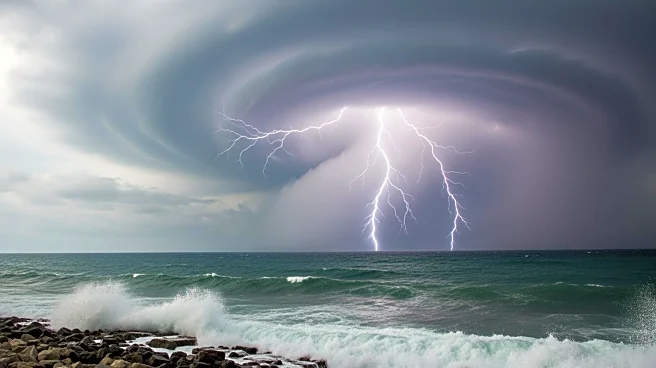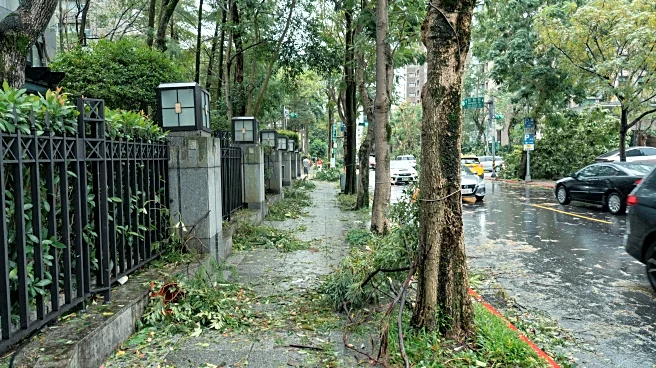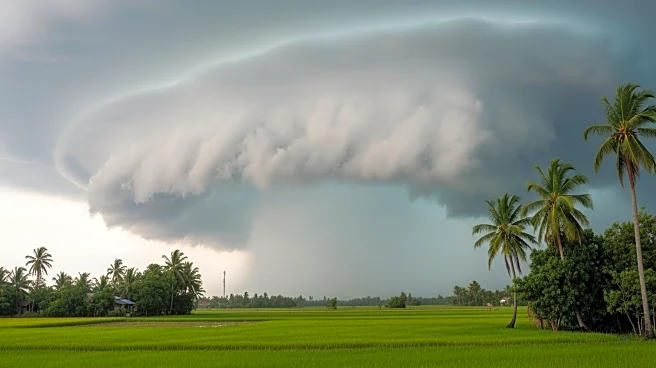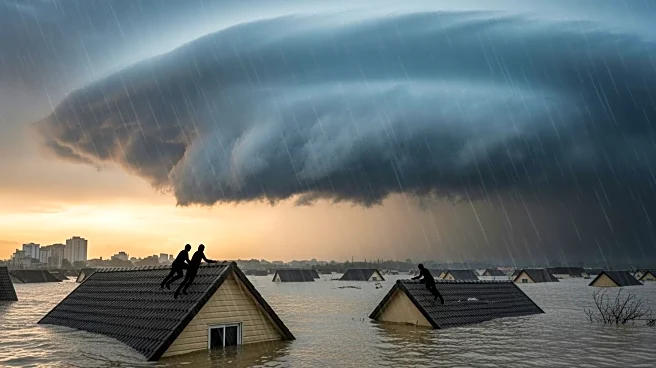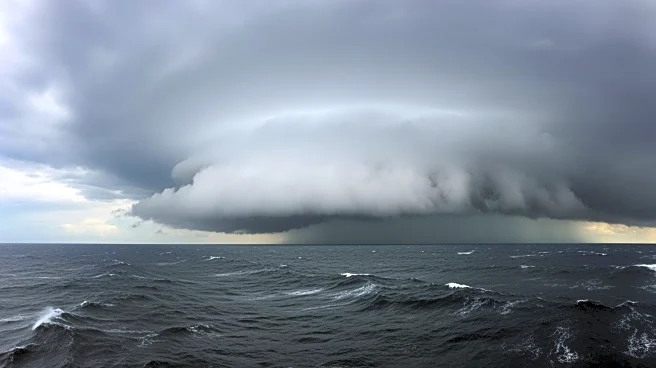What's Happening?
Typhoon Kalmaegi has struck the Philippines, resulting in at least 188 fatalities, making it one of the deadliest storms of the year in Southeast Asia. The typhoon has caused widespread destruction, affecting numerous communities and displacing thousands
of residents. Emergency services are working tirelessly to provide aid and support to those impacted by the storm. The severity of the typhoon has drawn international attention, highlighting the vulnerability of the region to natural disasters and the urgent need for effective disaster management strategies.
Why It's Important?
The impact of Typhoon Kalmaegi underscores the critical need for improved disaster preparedness and response mechanisms in Southeast Asia. The high death toll and extensive damage highlight the challenges faced by the region in dealing with such natural disasters. This event may prompt governments and international organizations to reassess their strategies for disaster management and invest in infrastructure that can better withstand such events. The humanitarian crisis resulting from the typhoon also calls for increased international aid and support to help affected communities recover and rebuild.
What's Next?
In the aftermath of Typhoon Kalmaegi, efforts will focus on providing immediate relief to affected areas, including food, shelter, and medical assistance. Long-term recovery plans will need to be developed to rebuild infrastructure and support displaced populations. The international community may play a role in providing aid and resources to assist in these efforts. Additionally, there may be discussions on enhancing regional cooperation and implementing more robust disaster preparedness measures to mitigate the impact of future storms.
